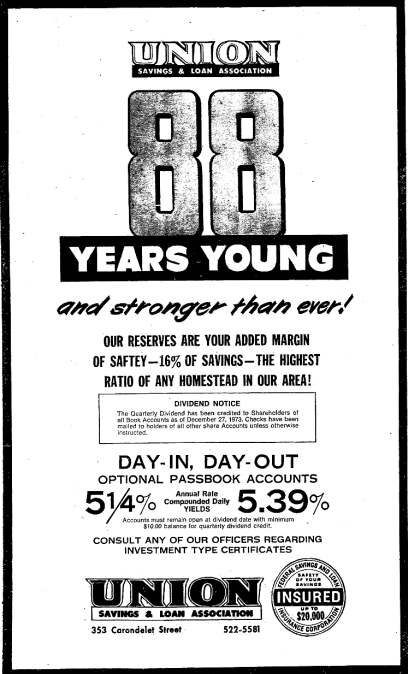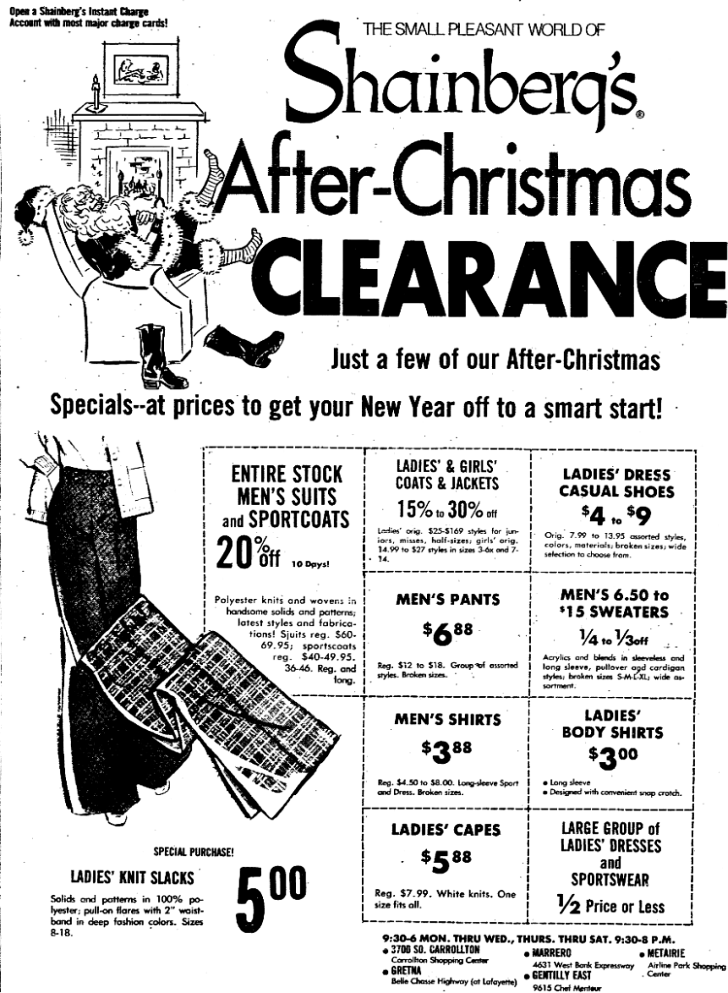|
Today in New Orleans History |
|
|
December 27



In 1901, the New Orleans Traction Compay slightly extended the Canal and Esplanade
Lines so that their outer ends met at City Park Ave., and connected them together in a Belt Line. Canal cars left the central
business district on Canal Street, operated to City Park Ave., turned down that street to Esplanade Ave., and returned on
Esplanade to Rampart and thus back to Canal Street. Cars marked Esplanade left the central business district via Rampart
Street down to Esplanade, then operated out Esplanade to City Park Ave. to Canal, and returned on Canal Street. This Belt
Line arrangement lasted until December 27, 1934, when Esplanade Ave. was converted to buses, and Canal resumed
running only on Canal Street, end-to-end.
The New Orleans Bee (French: L’Abeille de la Nouvelle-Orléans, Spanish: La Abeja de Nueva
Orleans) was a newspaper in New Orleans, Louisiana, founded on September 1, 1827, by François Delaup and originally
located at 94 St. Peter, between Royal and Bourbon. Initially published three times a week in French, an English section was
added on November 24, 1827, and in this form it was the most successful of New Orleans daily newspapers in the middle of the
nineteenth century. The English section was abandoned in 1872 because of increased competition from English-language newspapers,
but later restored. A Spanish-language section (Abeja) was published in 1829-1830. Until at least 1897 L'Abeille remained
"almost certainly the daily newspaper of choice" for French officials in New Orleans. The title was purchased in
1921 by The Times-Picayune and was published weekly until it closed in 1923. It was by some accounts the last French-language
newspaper in New Orleans, ceasing publication on December 27, 1923, after ninety-six years; others assert
that it was outlasted by Le Courrier de la Nouvelle Orleans, which continued until 1955.
Jean Étienne de Boré (December 27, 1741 –
February 1, 1820) was the first Mayor of New Orleans. Though born in Kaskaskia, Illinois,
he was sent to Europe to be educated and spent most of his life there. On leaving school he entered French military service
in the Musketeers of the Guard, and, later, after a visit to Louisiana, on business, was transferred to the cavalry. He
left the army with the rank of captain. His wife, Marie Marguerite d'Estrehan, came from one of the most prominent families
of colonial Louisiana; her father, Jean Baptiste d'Estrehan, was the Royal Treasurer of French Louisiana. Etienne owned
a great plantation a few miles above the City of New Orleans. There he had originally cultivated indigo. But when this
product lost its market as a result of competition from Guatemala, he turned his attention to the manufacture of sugar. On
his estate he set up a sugar mill and there, in 1795, had, with the aid of two Cubans, Mendez and Lopez, succeeded
in producing the first granulated sugar ever known in the colony, with the result that agriculture was completely revolutionized.
He was appointed mayor by Governor William C. C. Claiborne in 1803; he resigned to look after his personal affairs the following
year. He died at around 80 years old, and is buried in New Orleans' Saint Louis Cemetery No. 1. One of his daughters
was the mother of Louisiana historian Charles Gayarré.
|
|
|

To receive an update for each day in New Orleans history,
join our facebook page - Today in New
Orleans History.
Analytics |



